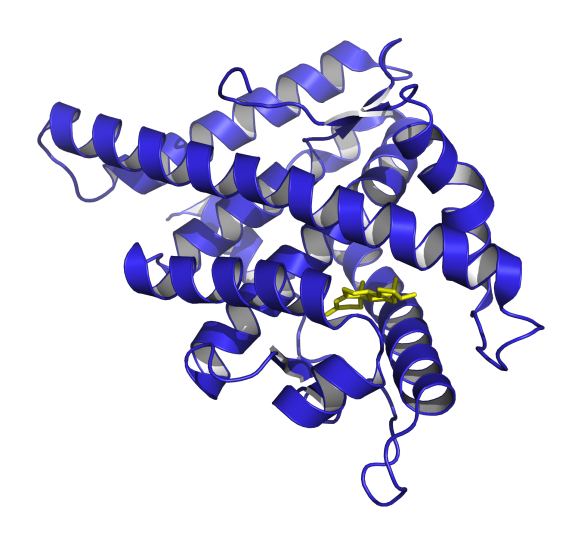"Let's talk about Sex" hormones – Part 2: The Androgen Receptor and Testosterone
What is it?
The androgen receptor is activated by testosterone, a steroid responsible for 'male' characteristics. Testosterone is also important for regulating muscle, blood cell formation and sexual function. Testosterone travels around the blood stream via carrier proteins, and can pass through the membrane of cells. Once inside the cell, testosterone is further activated before binding to the androgen receptor.
The androgen receptor, like the oestrogen receptor, acts to turn on expression of a number of different genes involved in 'male' characteristics and anabolic function. The oestrogen and androgen receptors are very similar in structure and function.
Males have much higher levels of testosterone, and females are much more sensitive to this hormone. Not only does testosterone play a role in maturation of the male sex organs, it is important for general health, such as prevention of osteoporosis. It also has a positive effect on muscle mass and strength, leading to the sometimes inappropriate use of anabolic steroids in athletes.
Interestingly, falling in love has been shown to initially decrease testosterone levels in males, and increase testosterone levels in females. However, these gender differences in testosterone levels are not maintained for a long period of time in the relationship!
What does it look like?
The structure of human androgen receptor binding domain (blue) bound to testosterone (yellow) (pdb code: 2AM9) was determined in 2006 to 1.65 angstroms.

Image generated by Pymol (http://www.pymol.org/) (pdb code: 2AM9).
Where does the structure come from?
The structure described above was published in 2006 in Protein Science. For a detailed list of all available crystal structures of the androgen receptor, bound to differing ligands, see http://www.proteopedia.org/wiki/index.php/Androgen_receptor/.






